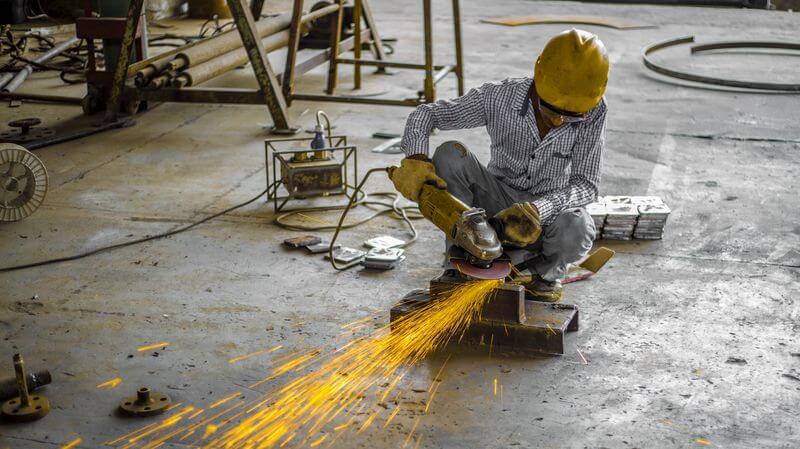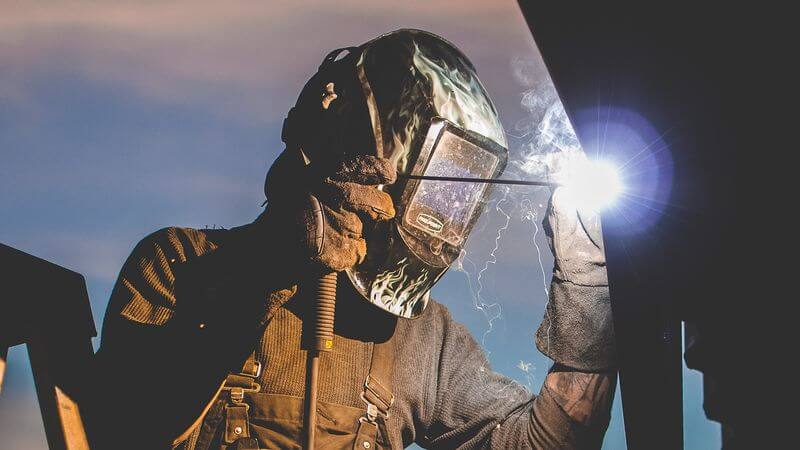Usually, in the mind of people, tech like virtual reality is associated with the use of gaming, entertainment and social VR. Whereas such cognitive system allows to reinforce learning. This works particularly well in scenarios such as medical and industrial corporate training which involves the performance of both mental and physical tasks.
Actually many companies have already implemented virtual reality as part of a corporate training and learning processes. Namely, according to K.R. Sanjiv, chief technology officer for consulting company Wipro, oil companies have been using VR for oil rig job training since 2014, and hospitals have been using virtual reality to train physicians in complex procedures for the past 4 years.
Here is the short list of advantages that VR training deliver to the companies.
- Realistic scenarios
- The possibility of any simulations
- Time-saving
- Cost-saving
- Suitable for different learning styles
- Innovative
- Safe/no risk
- The possibility of recording
- Fast feedback
- Can be performed remotely
VR enables faster onboarding with a minimum participating of expert employees or even without disrupting operations, immersing new staff deeper into business processes
Virtual reality applications automates the monotonous onboarding process, significantly reducing the workload of HR specialists.
Virtual reality corporate training can be more effective when new employees can interact with the virtual environment. In this case, everything depends on the specifics of the processes in the enterprise. In design, visual and audio content is sufficient for understanding how to adapt the abilities to the needs of the company. In professions related to STEM disciplines like engineering, virtual reality with the technology of haptic feedback has the advantage of manipulating virtual objects and training how to perform new operations.

In addition, it is possible to participate in the virtual reality training from home, which provides an additional time for practice when the employee is away from the workplace.
VR training helps to prepare new employees for operation situations at workplace without risks
Safe corporate training for potentially dangerous occupations, such as surgeons, firefighters, roofers, police officers, search and rescue workers, landmine removers, miners and many others is provided by virtual reality technology. By virtue of haptic feedback and motion capture the employee can act, move and interact with virtual objects as it was a real professional case.

Subsequently, the test behavior can be analyzed and the recommendations can help to improve performance, brush up on skills and save expendable materials. In addition, preliminarily trained in calm atmosphere of risk-free decision-making situations in virtual environment an employee can act in real professional situations more quickly and confidently. Almost any real task can be pre-trained in virtual reality.
Virtual reality is the method of corporate training that can engage all the human senses: sight, sound, touch, smell and taste. So, from this perspective, there is no better method of teaching and training.
Before the advent of virtual reality, the most progressive method of teaching was video lessons. It is really valuable that the teacher not only talks, but also gives the students opportunity to see what this is about.
Virtual reality retains all your senses at once, therefore it is impossible to be careless or distracted by something. Indeed, the speed at which information is acquired or the skills are trained directly depends to what extent we are concentrated.

In virtual reality, a company can recreate any number of complex hypothetical scenarios, and can train for them without risks associated with real-life situations.
A wave of interest in virtual reality for training is due to the fact that it makes it possible to replicate any place and circumstances even those which are impossible in real life. In addition, virtual reality is the most immersive and therefore, effective means of training.
Virtual reality emulates game-like environment for learning and training, thereby increasing employees’ engagement
Virtual environments for educational apps are often produced with the help of game engines and use gamification principles during training or education. Gamification is as well as possible suited to monotonous tasks, e. g. exercising. Best educational and corporate training applications contain numerous game-like elements that facilitate the study and motivate users to further enhancement:
- reward system in the form of trophies or points;
- joint problem solving;
- constructive competition and communication;
- progressive corporate training for advanced users;
- individual adaptation of the application according to the user’s skills.
Educational and corporate training goals are achieved faster in game-like environments as immediate feedback and strong visual stimuli motivate people to repeat necessary actions again and again. As known, repetition is the basis of learning and perfection process.
VR can be both informative, training and entertaining means of learning. High immersion level of virtual reality grabs attention entirely, when an employee has no choice to take a break.
![]()
Fun content is not only more preferred by trainees, what is most importantly, it is more effective compared with other non-inspiring learning tools. In turn, VR requires less money on retraining.
VR corporate training allows large-scale enterprises to cut costs for bringing complicated information and adapting employees to new workplace conditions
VR training brings information to staff quickly and easily regardless of location, excluding the human factor errors. Virtual reality enables economies of scale for large companies, as costs of implementing new solutions get reduced over time.
Costs of creating virtual reality onboarding videos have fallen considerably in the last few years. 360-degree cameras offer precise, high-resolution media with no significant cost increase. Web-based virtual reality authoring platforms let companies to create their VR training applications entirely in house. And a wide range of HMDs allows companies with a different training budgets using virtual reality.
Virtual reality reduces the time and corporate training costs and also is more flexible to reproduce or change operation environment
As claimed in the report “Immersive and Haptic Educational Simulations of Assembly Workplace Conditions” by Poznań University of Technology presented at 2015 International Conference on Virtual and Augmented Reality in Education, immersive VR simulations are powerful teaching tools which require workers to perform tasks or to solve special problems within a virtual environment that imitates real workplace.
Also the report states that simulation of workplace translates into acquisition and development of advanced and higher-order skills because workers train in realistic conditions taking risks without responsibility for errors. This is important for tasks that are particularly dangerous or costly.

Haptic devices improve realism in virtual environments
As early as in 2007, the research “Haptic Feedback Enhances Force Skill Learning” of the scientists from Stanford University and Purdue University proved that visuohaptic training is much more effective than visual or haptic training alone. That’s why haptic training may be an effective tool for teaching sensorimotor skills.
Previously mentioned research “Immersive and Haptic Educational Simulations of Assembly Workplace Conditions” confirmed the idea that immersive environment can be realistic if inexperienced worker performs exploration and initial learning at the workplace.
Should the workforce experience high turnover and need frequent onboarding, or be geographically spread, or get exposed to significant HSE risks, VR training becomes a highly viable option.
Highly immersive VR with cybernetic second skin is the best option for corporate training
Here are the benefits of VR second skin with full immersion:
- immerses entire body into the experience;
- adds touch to virtual reality;
- activates passive haptic learning process;
- allows reading out individual indicators of health and performance;
- flexibility;
- wireless connection;
- freedom of movement;
- implemented invisible sensors;
- relatively / potentially low-cost fabrication.
VR improves the business processes at the stages of employees’ hiring, onboarding and corporate training.
Onboarding with VR becomes faster and cheaper as it reduces the necessity of experts’ participating. Also VR training contributes to preparing new employees for operational situations safely for professions with significant HSE risks.
Virtual reality is especial training method as it can engage all the human senses such as sight, sound, touch, smell and taste, what is extremely important for working with unsafe environments.
In addition, VR enables to create numerous complex hypothetical scenarios and reconstruct any environments, so best preparing staff for unexpected production situations. Virtual reality facilitates corporate training and makes it fun due to gamification, increasing employees’ engagement and stimulating competitive spirit.
Once implemented VR training allows many companies with great staff to cut costs through economies of scale. Virtual reality is particularly effective paired with whole-body haptic devices that improve realism immersing user deeper in virtual environment.
As Michael Allen, e-learning industry pioneer, once said, the fundamentals that make a good game are the same that make a good learning experience. So, VR solutions go from entertainment and social VR to effective corporate training and education.
